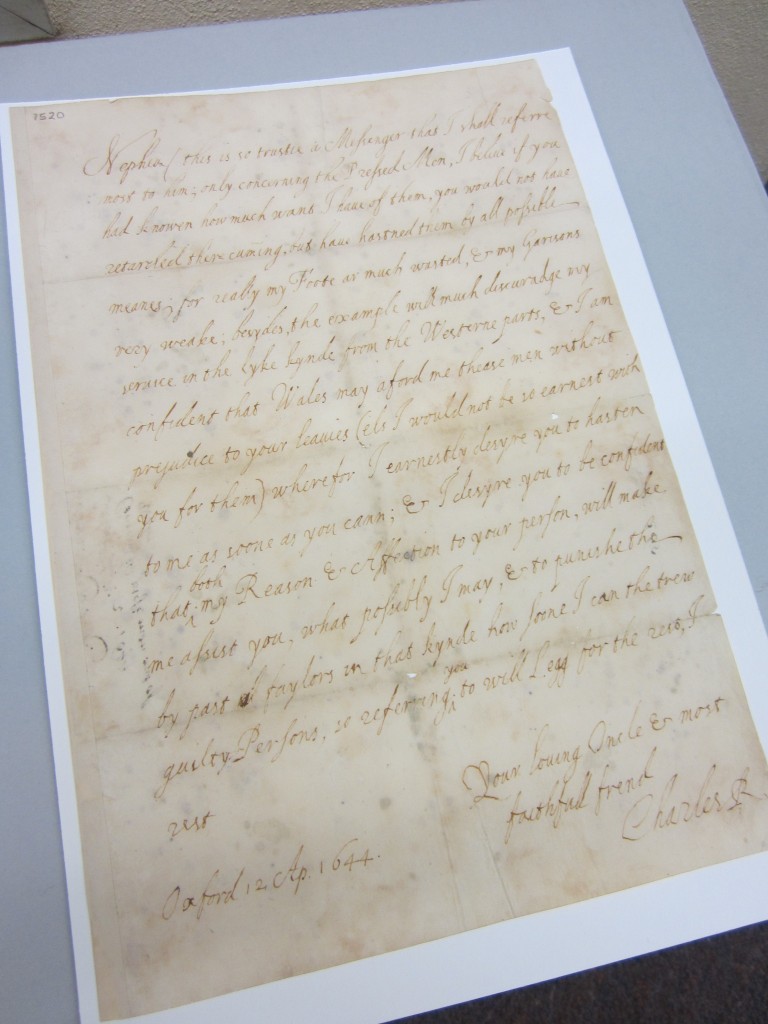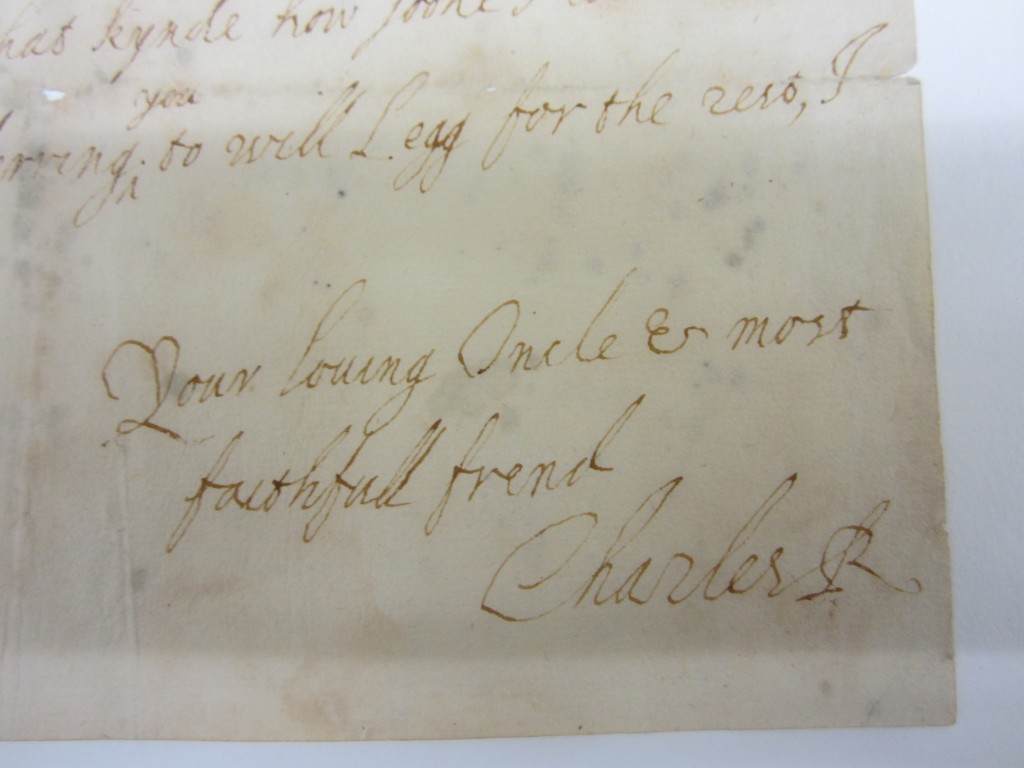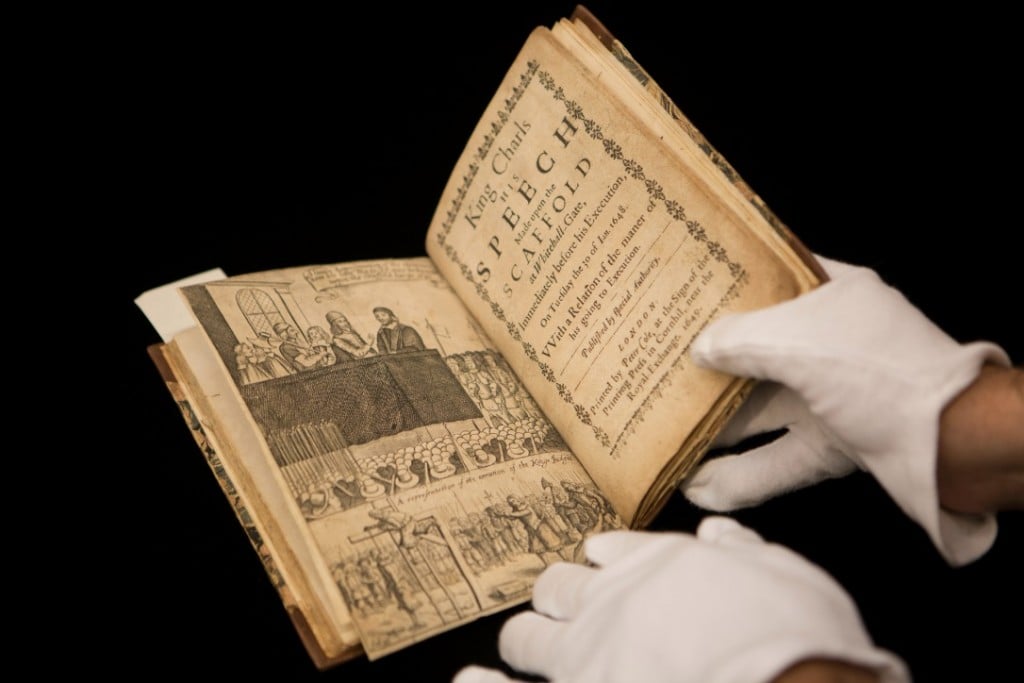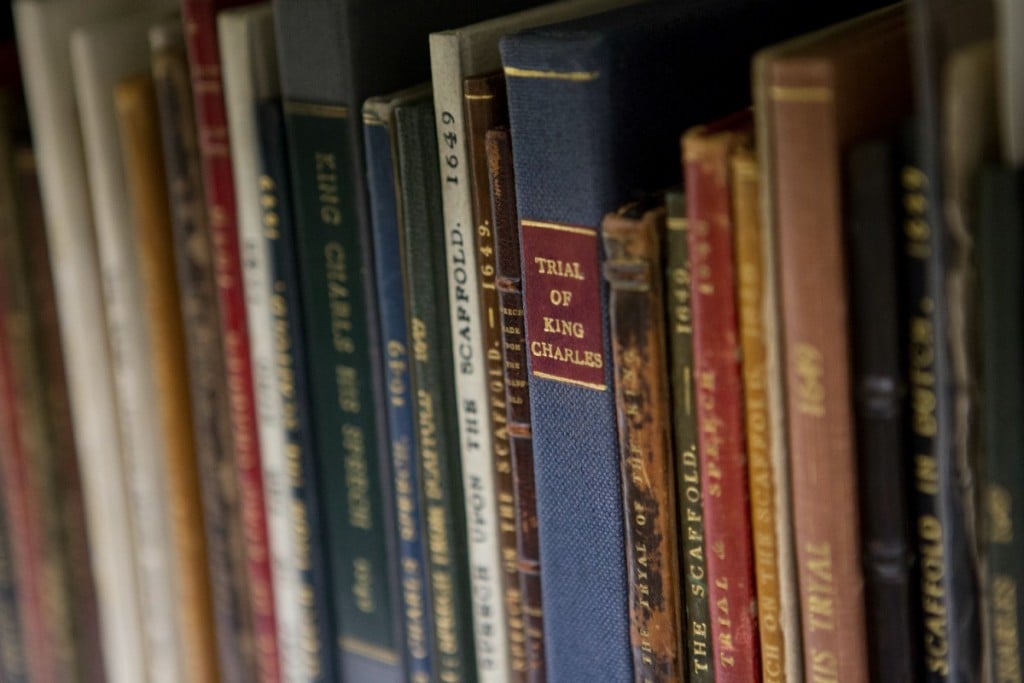A selection of rare 17th-century English Civil War pamphlets have been acquired for the State Library’s Emmerson collection this month.
The 33 pamphlets were purchased in four lots from the Robert S. Pirie sale at Sotheby’s New York, using funds bequeathed by John Emmerson to support ongoing additions to his exceptional collection of early printed English books. The Emmerson collection was generously donated to the Library by his family in January 2015.
Published in the early 1640s, at the outset of the violent conflict between Charles I’s royalist forces and the parliamentarian army, the newly acquired pamphlets will complement and extend the Emmerson collection in targeted ways.
Prince Rupert
Amongst them are 12 pamphlets about Prince Rupert (1619–1682), Charles I’s nephew and military ally during the Civil War. They include the intriguingly titled The Parliaments Vnspotted-bitch: In Answer to Prince Rupert’s Dog called Boy And his Malignant She-Monkey (London, printed for R. Jackson, 1643).
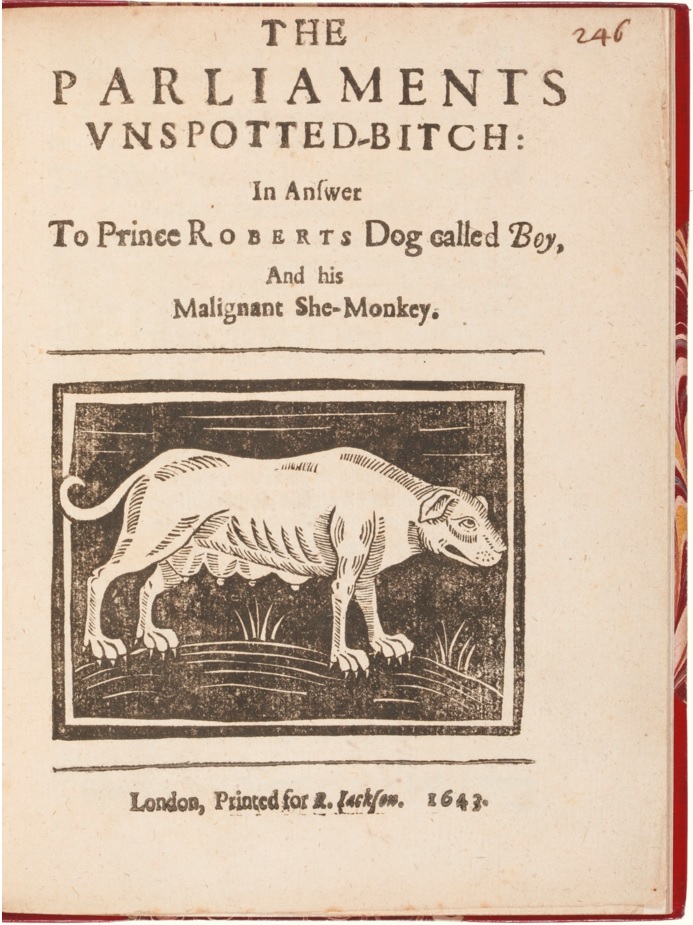
Detail from The Parliaments Vnspotted-bitch: In Answer to Prince Rupert’s Dog called Boy And his Malignant She-Monkey, 1643.
John Emmerson had a special interest in Prince Rupert, and published an article about him in 1994: Prince Rupert’s White Dog: An episode in publishing history, BSANZ Bulletin , vol. 18, nos. 2–3, 1994, pp. 86–92.
His collection includes a letter from Charles I (written in his own hand) to Rupert in 1644, thanking him for his loyalty and requesting his urgent attendance in Oxford. A very early portrait of the dashing Cavalier prince appears in the Mercurius Civicus, Londons Intelligencer, an illustrated newspaper published throughout the Civil War, of which the Emmerson collection holds a rare complete set.
The dashing prince
Rupert (a native of Bohemia, where Charles I’s sister Elisabeth had married Frederick, briefly the King of Bohemia) arrived in England in 1642. A dashing, romantic figure – with the characteristic long, flowing locks of a Cavalier – he quickly won several key battles for his uncle, attracting admiration from the royalists and the ire of parliamentarian pamphleteers in London.
Pamphlets were rushed out that accused him of barbarity towards women and children, and even of losing battles that he had won. Rupert hit back, also using the medium of the pamphlet, and as the war of words progressed throughout 1642, even Rupert’s pet was drawn into the fray.
Rupert had a white poodle called Boy, who rode with him into battle and was deeply devoted to him. Parliamentarians accused Boy of being a witch in dog form, who used his supernatural powers to protect and benefit Rupert, and who was humself indestructible. Though Rupert wrote pamphlets to defend Boy and himself, the parliamentarians’ printing presses were always ready, and The Parliaments vspotted-bitch is one such response, in which the author has invented a dog to represent the parliamentarian cause, as a counterpoint to Boy.
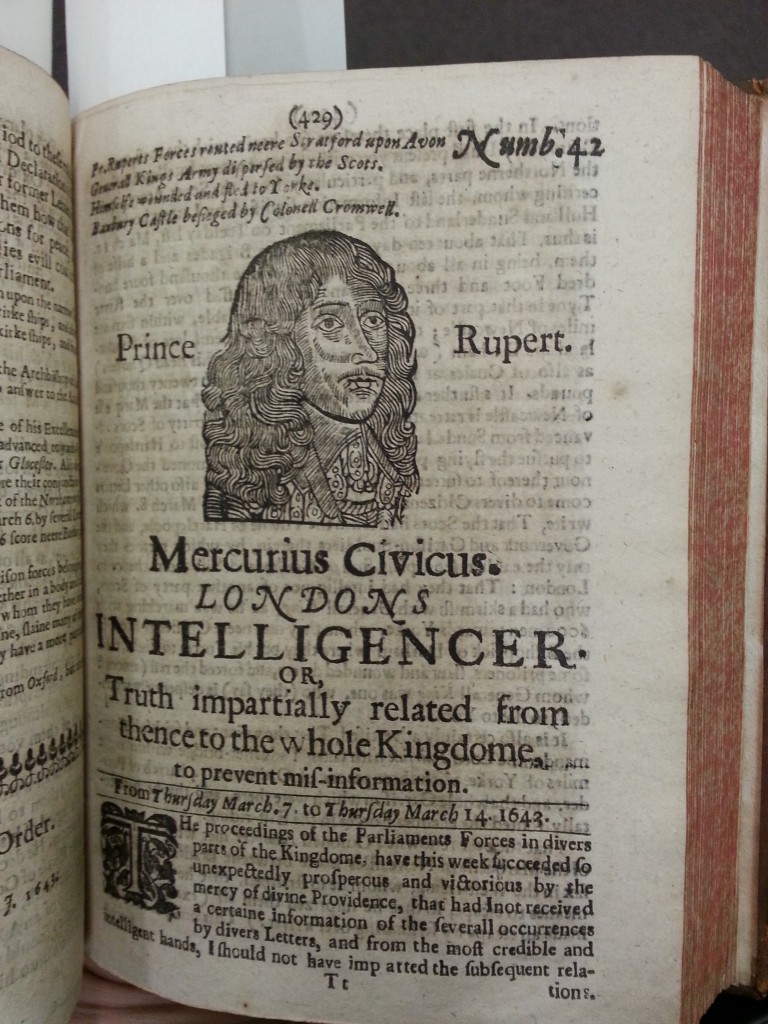
Mercurius civicus, Londons intelligencer, 1643-1646.
Hardened propaganda
There is a humourous tone to much of this pamphleteering tit-for-tat which, as Emmerson noted in his article about Rupert, faded out in 1643, when it became clear to both sides that the war would not be a short one. Propaganda took on a far more hardened, political edge, and the little white poodle was forgotten as the country descended into a bloody civil conflict that climaxed with the execution of Rupert’s uncle Charles I in 1649.
Items on display
You can see a selection of works from the Emmerson collection on display in our Mirror of the World exhibition, open daily in the dome galleries. One of the world’s largest collections of rare English printed works, the Emmerson collection includes more than 5000 items bound in 3500 volumes.
Spanning political, religious, philosophical and literary works, it is a rich resource for historians and literary scholars. Its significance lies not just in the sheer quantity and quality of the books, but also in the important provenance of items, including works originally owned by significant figures at the time of Charles I’s reign. The only comparable collections belong to the British Library and Oxford’s Bodleian Library.
Find out more about the Emmerson collection.


